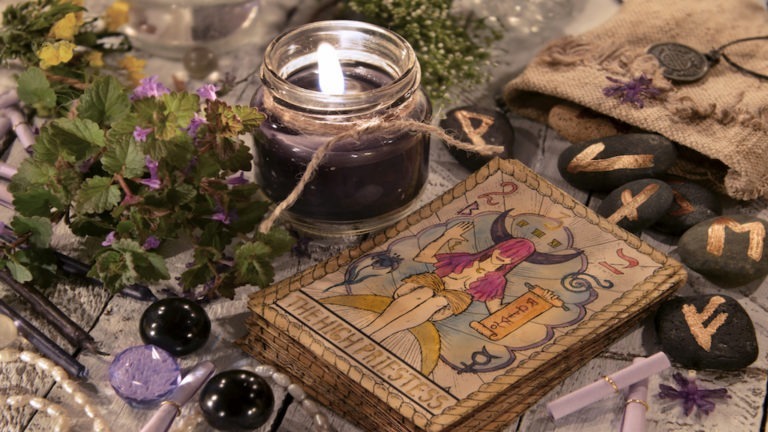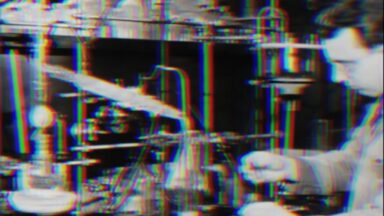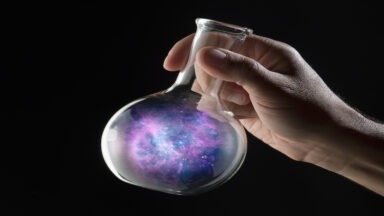Who is Aleister Crowley?

In November, 1877, Gilbert and Sullivan premiered their operetta, “The Sorcerer,” in London. It was a formulaic, witty, funny tale about a magician, a misapplied love potion, the chaos that ensued and the cost that had to be paid for the use of a magical spell. It was quite popular, being offered to a culture, hungry for tales of the supernatural and occult. Little could anyone have known that less than 100 miles away, there lived a two-year-old boy named Edward, who would grow up to become the most notorious and infamous sorcerer, magician, and occult figure of his generation, and perhaps of any generation before, or since.
Edward Alexander Crowley was born in Leamington Spa, England, in 1875, in the middle of the Victorian Era. He was born into a well-to-do family, one that had owned a successful ale brewery. Crowley Ale was popular and featured a drawing of a crow upon the label, perhaps to aid in the correct pronunciation of the crow part of the name, “Crowley.” (Don’t fret if you’ve pronounced it wrong all this time; I was wrong for over 40 years.)
Edward eventually changed his name to Aleister, with a unique spelling, the reason for which may become evident to the reader after getting to know Crowley’s humor. He then went on to become a legend in his own time.
There are dozens of biographies of Crowley’s life. In fact, an excellent documentary is available right here on Gaia. I highly recommend it for anyone who’d like a light look at Crowley, but more importantly at his influence, persisting today, with those who follow his spiritual imperatives and beliefs, as well as his impact on our culture in general.
As there are numerous sources for a good biography of Crowley, I’ll focus more on what I consider to be some of the most interesting ideas and misunderstandings about the man.
Was Aleister Crowley a Satan Worshiper?
Anyone who studies Crowley for any amount of time will understand how brilliant he was and how much he enjoyed being the antagonist, and for many the bogeyman. His upbringing was in, “The New Brethren of Plymouth,” an intensely religious order that demanded deep study of the Bible. Growing up in this atmosphere gave him access to Scripture, as well as providing a strong example of a narrow religion that, he seemed to feel, was largely impotent.
One man’s Devil is another man’s deity. He viewed the image of Satan, with horns, cloven hooves and so on, to be a representation of Pan, a concept of Nature. I believe it’s safe to say that Crowley didn’t believe in the Devil at all, only in the power of Nature and the drive to create, something that intimidated a more gentle society.
He famously called himself, “The Beast.” There isn’t room to discuss what I believe he actually meant by this, but suffice to say that in the Book of Revelations, The Beast is not the Devil, nor the Antichrist. He is, in fact, the consort to the Babalon (Crowley’s spelling), the feminine aspect of this iconoclastic duo. It’s my opinion that he is harkening back to older ways and the concept of God and Goddess, denied by most modern religions. Crowley also embraced sex, sexuality and incorporated it into his Magick, giving him a reputation for being a hedonistic pervert. He had no love of evil and usually embraced peace, but he was still vilified, something he didn’t always mind.
Was Crowley a Drug Addict?
The short answer to this is, yes. Crowley was an expert mountain climber and ascended some of the highest peaks in the world. Between this rugged activity and what may have been chemical injuries to his lungs during his school years, he was a victim of asthma. When he was around 50 years of age, he was prescribed heroin, as it was known not only as a painkiller but also was said to be an excellent bronchodilator. His use of heroin was always under prescription and doctor supervision. He became addicted and needed to use the drug until his death, at age 72.
Aleister Crowley’s use of hallucinogens was another matter. He had a fondness for Anhalonium, the psychoactive ingredient of peyote, and took much of it during his lifetime. There are two things to note here: firstly, at the time Crowley was using these drugs, they were not yet illegal, and secondly, the use of hallucinogenic drugs has been a part of the occult experience for thousands of years. Fly Agar, the red capped mushroom often found beneath birch trees, is well-known for its psychotropic effects and was said to have been used by the Ancient Druids, as well as Witches of old, to provide altered states and doorways for shamanistic journeys.
Did Crowley’s Use of Hallucinogens Have Anything to Do With Drugs Used In the 60s?
There is a famous photograph of Dr. Timothy Leary, dressed up as Crowley, imitating a photo of the Magician posing while giving the symbol of Pan. Dr. Leary is grinning in that picture in a, well, knowing way. There is no doubt in my mind that Crowley’s drug usage was hugely influential to Leary and his work with LSD for spiritual reasons. Even a brief reading of Aleister Crowley’s works will excite the imagination and raise the question of the veracity of his claims.
I’ve known many people who tried such drugs specifically because Timothy Leary suggested their use as a mind expanding, life enhancing experience. I’ve also known magical practitioners who have also used them in order to stretch the bounds of reality and break through to other dimensions. At any rate, the use of LSD, peyote, psilocybin, and other mind altering drugs became the norm for a certain demographic in the 60s. It was said that LSD was the sacrament of the hippies, who also experimented with alternative religions and spiritual paradigms. The answer is a big yes, Crowley had a huge influence on drug usage in the 60s.
Did Crowley Have Anything to Do with the Sexual Revolution?
This is much too vast a question for this article, but I know that he did influence changing views and values in gender and sexuality. We must remember that the status quo, that which had been in power for thousands of years, viewed and perhaps still does see women as a subset of the world of men. This idea is offensive on every level and obviously wrong. Crowley touched on gender equality, just as he didn’t shy away from same sex relationships. In Nature, the sex urge is necessary for survival of the species, and is also a source of pleasure. He refused to acknowledge the sin of human sexuality.
Crowley’s honoring of the goddess, in the form of Nuit (his spelling), Aphrodite, Astarte, the Babalon, or any other number of depictions, was an important shift from what had come before. It was not completely unusual for magical orders to honor women, often as ritual sex partners, and he gave them a large role in his work.
Ever the contradiction, Crowley could be misogynistic, demeaning and controlling, but his insistence upon the sacrosanct nature of the goddess was unquestionable and welcomed by post Victorian society. By the time the 60s came along, his works, and those of his contemporaries, had helped to pave the way for change in the landscape of our culture.
Aleister Crowley the Showman
Crowley loved attention. He was a publicity hound, as long as it benefited him. There are dozens and dozens of photographs of him posing as The Buddha, Winston Churchill, an Arab, the Devil himself, donning theatrical outfits and taking on personas, many of which make it nearly impossible to recognize the man beneath the costume. It seems to me that he only wore the mask of those people that he felt he had an affinity to. Yes, I’m sure he identified with Lucifer, the bringer of light who was fated to be hated by mankind, but I know he never considered him to be evil, just misunderstood.
One costumed photograph in particular influenced me personally. It was a picture of Aleister Crowley as a high-ranking Freemason. Based upon that picture, I sought out and was accepted into the Masonic order, searching for the clues that he implied I would find there. It was only after many years, loads of frustrations and personal reasons, that I left the order. Ever the jokester, it seems that Crowley was never actually a masonic member. He had simply proclaimed himself to be the highest ranking Freemason in the world, posed for a picture in the outfit, and that was that. The joke was on me, and I still laugh when I think about it.
The Perils of Not Recognizing A Joke When You See One
This brings me to one of the most important aspects of Aleister Crowley’s work. To understand him, you must recognize the fact that he had a brilliant mind, and that he rarely said exactly what he meant. To put it in modern vernacular, he loved messing with people’s minds in order to get them to think.
He had an uncanny ability with numbers, so much so that his friend, Ian Fleming, used Crowley as the model for the villainous, Le Chiffre, in Casino Royale. Le Chiffre means, “The Cipher,” presumably alluding to Crowley’s uncanny ability to perform complicated Qabalistic calculations, known as Gematria numerology, in his head, thus finding hidden meanings in seemingly mundane situations, leading him to say things that can be easily misunderstood.
Crowley loved a joke, often at the reader’s expense. I’ve been working with his, “Book of Thoth,” his book on Tarot, for over 40 years, and the extent of his genius, wordplay, secret puzzles, games and hidden meanings is remarkable. His love of symbolism, and the belief that a symbol is a doorway and not just a concept, has given me some of the most exciting revelations, as well as frustrations, of my life. He loved to hide immense secrets in plain sight, while making sure to hide the keys to those treasures within the reach of the obsessed student, but totally out of the hands of the lazy and uninspired.
What About His Thoth Tarot Cards?
Crowley had no desire to create a new Tarot deck, but Frieda Harris, one of his devotees, finally convinced him that his viewpoint on the art of Tarot was desperately needed. He designed the cards, while she created the artwork. She is one of the true unsung heroes of modern metaphysics, although more and more are recognizing her massive contribution.
The deck is much more than a simple divination tool. The Crowley Thoth Tarot is a masterpiece of occult literature and is no less than a handbook of Universal Law. A thorough study of each card will reveal much about life and why things are the way they are. By seeking to learn as much about his Tarot as possible, the student will learn about ancient religions, the history of occultism, metaphysical paradigms that still exist today, and the role of religion in modern society. It’s all there waiting for you.
Forget the hyperbole and fear-mongering surrounding Aleister Crowley. What he had to teach was not only worthwhile, but absolutely necessary to our future. Maligned, misunderstood, imperfect, contradictory, loved, hated, and persecuted, Crowley is now one of the most famous occultists of all time. If he were alive today, he’d be a billionaire. There are thousands of sites dedicated to him and his Tarot is fast becoming one of the most popular in the word. His work has opened the minds and eyes of millions, allowing them to cast off the chains of dogmatic pedantry and take their rightful position as Natural Beings.
In Becoming The Beast, Crowley became all the more human.
Until next time, I wish you all peace and love.
Virginia Town Challenges Free Tarot Reading at New Age Store

When Mark Mullins thought to attract customers by offering free tarot readings at his new age store in rural Virginia, the city quickly informed him he was violating zoning laws. Now, Mullins finds himself embroiled in a battle with the city, accusing the council of pandering to religious zealots and impinging on his first amendment right of protected speech.
Mullins and his partner, Jerome VanDyke, own Mountain Magic and Tarot in downtown Richlands, Virginia. A six-year resident of the community, Mullins became interested in tarot as a teenager, saying his love for heavy metal sparked an interest in mysticism and the occult.
“I just wanted to read anything I could find on magic,” Mullins told Gaia in a recent interview. “It was the first thing I became obsessed with and it’s lasted 30 years.”
Mullins and VanDyke are the first openly gay couple to open a business in the rural, and overwhelmingly Christian town, admitting they sometimes face discrimination. But the two don’t seem phased by the occasional bigotry; instead they say local residents take greater issue with misconceptions surrounding the nature of their trade.
Richlands is a small, quiet community in the southwestern corner of the state, with a population of just over 4,000 residents. Prominently displayed on the town’s website is its motto, “The center of a friendly circle.” It touts itself as being one of the most peaceful towns in the state, and promotes its annual “Freedom Festival.”





































